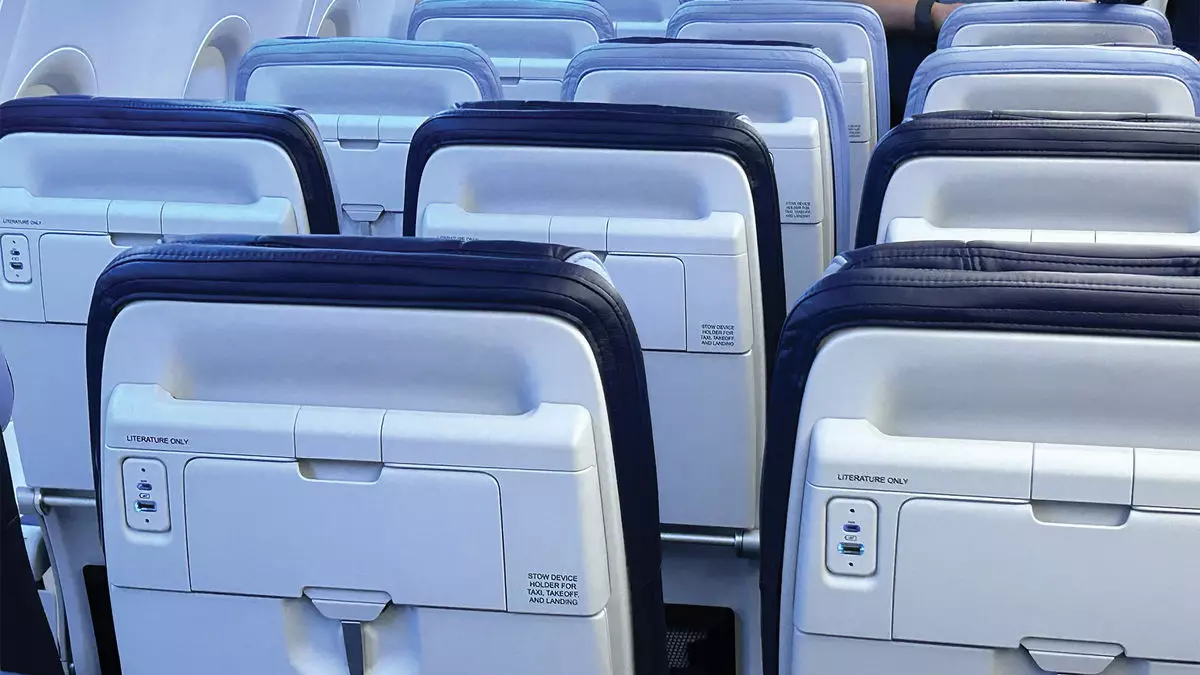In an unexpected shift in timeline, Southwest Airlines announced that the much-anticipated reconfiguration of its aircraft to include extra-legroom seats will not commence until mid-2025. This decision marks a significant delay from their original plan to start retrofitting as soon as March. The carrier’s strategy includes introducing these extra-legroom seats not as a standalone product until the first half of 2026, a move that aims to coincide with the rollout of assigned seating. This delay prompts questions about scheduling and operational readiness, especially as passengers have been eagerly awaiting improvements to in-flight comfort.
Until Southwest officially integrates assigned seating, customers can still experience the new seating configuration while boarding early, although availability hinges on specific plane models. Approximately a third of Southwest’s fleet will feature these extra-legroom seats, offering a generous 34 inches of space between rows. However, passengers should take note that to accommodate this enhancement, Southwest will narrow legroom on its larger aircraft, particularly the 737-8, reducing standard seat spacing by one inch to 31 inches. On the smaller 737-7 aircraft, some current seats will be removed to make way for the extra-legroom options.
Ryan Green, the executive vice president of transformation at Southwest, expressed optimism regarding the forthcoming changes, asserting that the airline expects to receive the Federal Aviation Administration (FAA) weight and balance certification for the new aircraft configuration in the first quarter of 2025. However, the airline is likely to encounter delays with the Supplemental Type Certificate, which is anticipated to be awarded in the second quarter. This certification process is crucial for ensuring the safety and compliance of the modified fleet.
Moreover, Southwest aims to retrofit its fleet of approximately 800 aircraft at an ambitious pace of 50 to 100 aircraft per month. Given the scale of this operation, the logistics of converting a large number of planes to accommodate enhanced seating will be a monumental task. The success of this endeavor will not only depend on regulatory approvals but also on the coordination of maintenance operations across the fleet.
Alongside the changes in seating configuration, Southwest is actively pursuing initiatives to elevate its commercial strategy. Green shared insights about the airline’s interline partnership with Icelandair, set to launch on February 13 through Baltimore, with future expansions planned for Nashville and Denver later in the year. This partnership underlines Southwest’s commitment to enhancing connectivity and offering more travel options to its customers.
In another exciting development, Southwest’s vacation package division, Getaways by Southwest, will integrate MGM Resorts into its portfolio, expanding options for travelers visiting Las Vegas. Green highlights the significance of this partnership, stating it allows Southwest to tap into a considerable inventory of accommodation choices in one of the nation’s most visited destinations. This strategic pivot towards direct sales indicates the airline’s focus on maximizing profitability in a competitive travel market where traditional agency sales play a marginal role.
From a financial perspective, Southwest Airlines appears to be on a path to recovery. Despite the turbulence faced during the fourth quarter of 2023, where the airline recorded a net income of $261 million, the results marked a striking turnaround from a net loss of $252 million in the same period the previous year. Fuel prices significantly influenced operational expenses, which saw a decline of 7.9%, aiding in improved profit margins.
For the entirety of 2024, Southwest’s financial status remained stable, mirroring its net income figures from 2023 at $465 million. The airline’s revenue reached $27.5 billion, a promising increase of 5.3%, aided by a 4.4% rise in capacity. Looking ahead, CEO Bob Jordan emphasized that the airline is well-positioned to meet revenue and margin goals set forth during the Investor Day in September, projecting an increase in margin to between 3% and 5% for 2025—up from a modest 1.2% margin in 2024.
While Southwest Airlines is recalibrating its timeline for in-flight enhancements and operational changes, its overarching strategy focuses on improving passenger experience and solidifying financial stability. With a meticulous approach to fleet transformation and strategic partnerships, the airline is poised to emerge stronger in a post-pandemic travel landscape.

